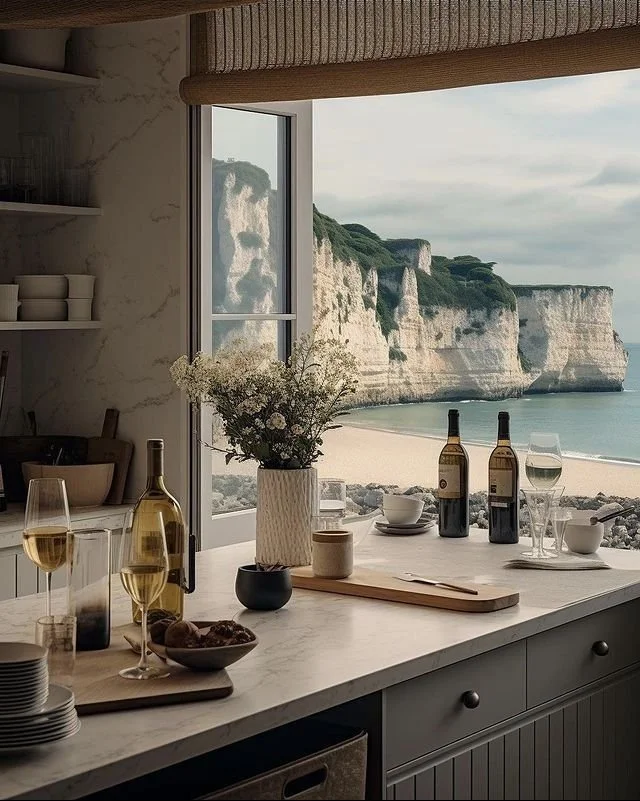Candle making is more than just a hobby; it's a way to infuse your home with creativity, warmth, and personal flair. Whether you're looking for a relaxing pastime or simply want to learn how to make something beautiful, candle making can be the perfect fit.
In this beginner’s guide, we walk you through the basics, from the essential supplies to the first steps of creating your very own candles. By the end, you'll know exactly how to craft candles tailored to your preferences, all while enjoying a hands-on activity that brings satisfaction with each melt and pour.
If you’re just starting out, this guide is designed for you. It’ll help you choose the right materials, understand the process, and avoid common mistakes, so your candle-making experience is as smooth and enjoyable as possible.
No. 1
Why Candle Making is the Perfect Creative Hobby
Candle making isn't just an art; it’s a therapeutic experience that lets you express your creativity in a personal and tangible way. As you mix and match colors, shapes, and scents, you'll discover that each candle you create reflects a bit of your personality. There’s something uniquely satisfying about holding a finished product that you made from scratch.
Beyond the joy of creating, candle making also offers relaxation. The process of melting wax, pouring it carefully, and watching it solidify into a beautiful form is almost meditative. For many, it's a stress-relieving hobby, giving you a break from the fast-paced digital world.
Another reason candle making is so rewarding is the ability to choose eco-friendly and sustainable materials. You can opt for natural waxes like soy or beeswax and avoid harmful chemicals by selecting high-quality fragrances. This way, you’re not only crafting beautiful candles but also contributing to a more eco-conscious lifestyle.
No. 2
The Essential Tools and Candle Making Supplies You’ll Need
When starting out with candle making, the right tools and materials can make a world of difference. Although the process might seem simple, each step relies on having high-quality candle making supplies to ensure your candles turn out as you imagine them.
The key to success is in preparation. From the type of wax you choose to the wick that fuels your candle's flame, every decision shapes the final product.
You’ll need to select supplies based on the type of candle you want to create—whether it’s a traditional pillar, a charming jar candle, or something more decorative. But don’t worry if this sounds overwhelming; as a beginner, your focus should be on sourcing just the basics, which can evolve as you get more comfortable with the craft.
Basic Candle Making Supplies
Wax: Soy wax, beeswax, or paraffin wax are common choices.
Wicks: Choose the right size based on the diameter of your container or mold.
Fragrance Oils: High-quality oils that are safe for candle making.
Dyes: Optional, but great for adding color to your candles.
Containers or Molds: Jars, tins, or silicone molds for shaping your candles.
Thermometer: To monitor the wax temperature.
Double Boiler or Melting Pot: For safely melting wax.
Wick Holder: To keep the wick centered while the wax cools.
As you experiment, you’ll discover the joy of working with different waxes, wicks, and fragrances. These elements come together to form the personality of your candle, from the way it burns to the scent it releases.
Pay attention to the subtle details: the wax’s texture, the wick’s material, and the fragrance’s intensity. Each component plays a role in creating a candle that’s uniquely yours.
Having the right supplies not only ensures a smooth crafting process but also enhances your ability to get creative. Once you're familiar with the essentials, you can start exploring new techniques like layering colors, adding intricate designs, or blending fragrances for that perfect aroma.
No. 3
Step-by-Step Guide to Making Your First Candle
Now that you’re ready to begin, let’s walk through the process of making your first candle. It’s important to approach this step-by-step, ensuring each stage is done with care for the best results.
1. Prepare Your Workspace
Candle making can get a little messy, so cover your surfaces with newspaper or an old cloth. Gather all your tools in one place, making sure everything is within reach. This preparation will save you time and help prevent mistakes once the wax starts melting.
2. Melt the Wax
Begin by gently melting the wax in your chosen melting pot, keeping an eye on the temperature. This part of the process can feel a bit like cooking—you want your wax to reach just the right temperature for mixing in fragrances and colors, without overheating. Use a thermometer to monitor the wax as it melts.
3. Add Fragrance and Color
When the wax has melted and reached the desired temperature, carefully stir in your chosen fragrance oil and dye (if using). Be sure to follow the recommended fragrance-to-wax ratio to avoid overpowering or underwhelming scents.
4. Prepare the Wick and Mold
Place the wick in your container or mold, ensuring it stands straight. Some candle makers like to secure it with a wick holder or a simple stick laid across the top of the mold to keep it centered.
5. Pour the Wax
Slowly pour the wax into the mold, taking care not to splash. This is where the magic happens—watching the molten wax settle and begin to cool.
6. Let the Candle Cool
Allow the candle to cool at room temperature, and resist the temptation to rush the process by placing it in the fridge. Slow cooling helps avoid imperfections like cracks or air bubbles.
7. Trim the Wick
After the candle has completely hardened, trim the wick to about ¼ inch. Congratulations! You’ve created your first candle.
Boy Smells
Elevate your space with Boy Smells candles—where bold scents and sleek design meet to create a unique, sensory experience that redefines home fragrance.
No. 4
Creative Ideas to Personalize Your Candles
Once you’ve mastered the basics, candle making becomes a world of endless creativity. There are countless ways to personalize your candles, whether you want to create something with a modern minimalist look or a colorful, whimsical design.
Ways to Personalize Your Candles
Color Layering: Pour different colors at various stages of cooling to create a layered effect.
Unique Scents: Experiment with essential oils to create custom fragrance blends.
Decorative Containers: Use upcycled jars, tins, or vintage glassware for a unique touch.
Molds: Create fun shapes with silicone molds, from stars to hearts.
Personalizing your candles not only makes them more visually appealing but also gives them meaning, whether they’re for yourself or as thoughtful handmade gifts. With a bit of creativity, each candle you make will have its own story.
No. 5
Common Mistakes and How to Avoid Them
Like any new craft, candle making can come with a few bumps along the way. However, knowing what to watch out for can help you avoid common mistakes that beginners often face.
Common Mistakes
Sinkholes: Prevent this by pouring the wax in two stages—fill the mold almost to the top, let it cool slightly, then pour the remaining wax.
Uneven burn: Choose the right wick size for your candle to ensure an even burn.
Weak or overpowering scent: Follow fragrance-to-wax ratio guidelines and add fragrance at the correct temperature.
With these tips in mind, you’ll be able to sidestep some of the common pitfalls of candle making and set yourself up for success with every batch.
Takeaways
Candle making is a rewarding and creative hobby that allows you to design something beautiful from scratch. Whether you're making candles for relaxation, decoration, or gifts, the process is as enjoyable as the result. By understanding the basic steps, gathering the right supplies, and allowing room for creativity, you’ll find that candle making becomes a calming and satisfying part of your routine.
So, what are you waiting for? It’s time to gather your supplies, set up your workspace, and start crafting candles that reflect your personal style. With each candle you create, you’ll gain confidence, learn new techniques, and most importantly, enjoy the process. Happy candle making!
Looking for Home Resources?
Looking to enhance your living space and create a sanctuary that supports your well-being? Explore our home partners who offer a wide range of resources to elevate your home environment.




































































































































































































